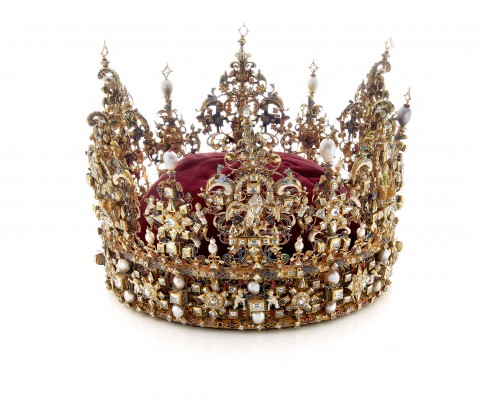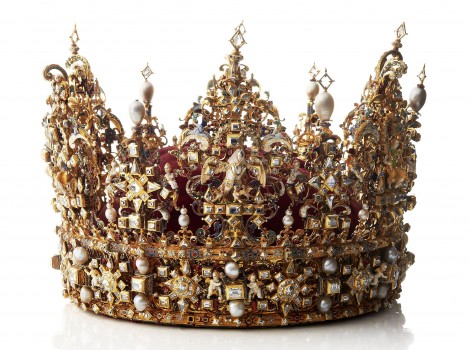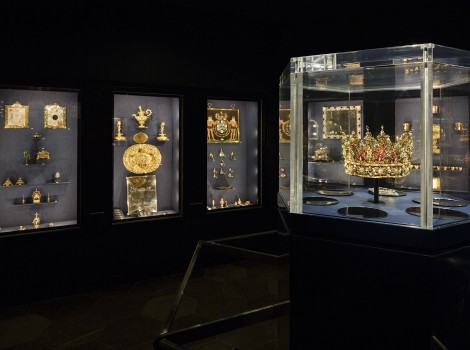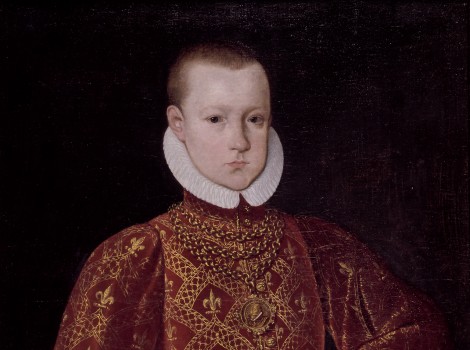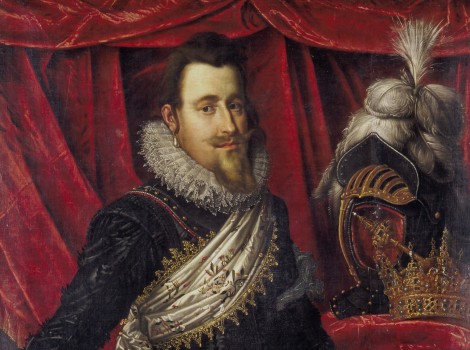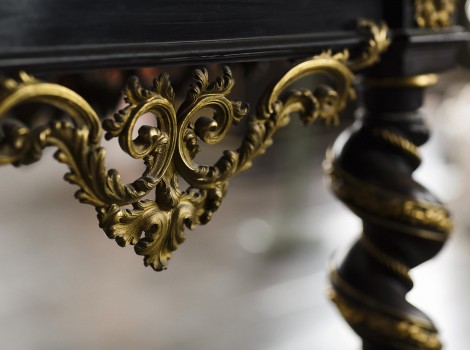Dirich Fyring
The goldsmith Dirich Fyring arrived in Odense in the late 16th century. In 1581 he went into the service of Frederik II. In the years before 1595 he executed several works in silver for the King, amongst these; silver trumpets, a number of gold chains and portrait enamels in gold. He also mounted diamonds, rubies, sapphires and executed enamel works.
In 1596 he was assigned to make Christian IV’s crown. This is the only work by him known to have been preserved, and it is a major work in European goldsmith’s art from the Renaissance period, with its richly variegated ornamentations and beautifully modelled figures. In 1597 he received gold for a piece of jewellery with a large sapphire – perhaps the one now placed in Christian V’s crown – together with some gold rings for the King’s pearled horse blanket.
Fyring recieved money in connection with the crowning of Christian IV’s Queen Anna Cathrine in 1599. It may have been payment for the Queen’s Crown. He died in 1603 in Copenhagen.

 Dansk
Dansk
 English
English
 Deutsch
Deutsch

